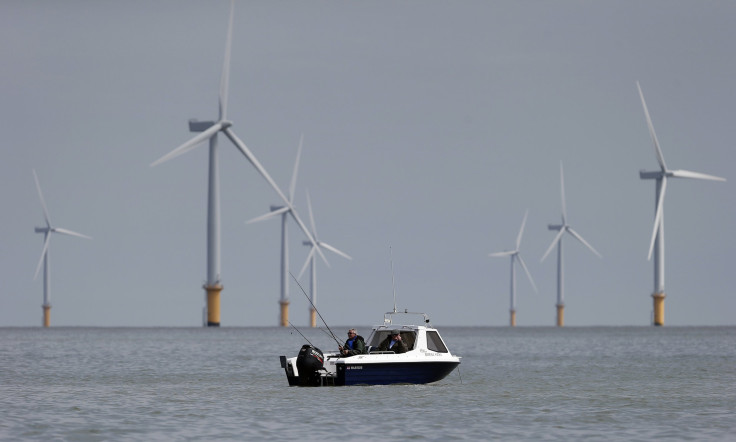America's First Offshore Wind Farm Breaks Ground; A Critical Milestone For Struggling Industry

America's first offshore wind energy farm is finally under construction. Rhode Island officials and the developer, Deepwater Wind, broke ground on the 30-megawatt project this week, marking a critical step in the nation's much-beleaguered effort to install wind turbines in state and federal waters.
Offshore wind development in the United States has long lagged progress by Europe and China, where thousands of windmills are already spinning and transporting electricity via underwater cables. U.S. developers and utilities lack the financial and regulatory incentives that competitors enjoy abroad, and American companies have struggled for years with complications and delays.
Deepwater Wind's Block Island project has been in the works for about seven years. The developer says it will install five turbines near the island by 2016. The $290 million wind farm will generate enough electricity to power the homes and businesses of Block Island's 1,000 residents, who rely mainly on diesel generators to keep the lights on, Deepwater Wind CEO Jeffrey Grybowski said.
Grybowski met Monday with Rhode Island lawmakers and members of Congress at the marine construction firm that is fabricating pieces of the turbine's steel foundations in North Kingstown. Grybowski said the year-and-a-half-long construction process will create around 330 jobs as turbines are built and installed, and submarine cables are laid, local media outlets reported.
Emily Norton, who directs the Sierra Club's Massachusetts chapter and has backed the Rhode Island project, called the groundbreaking the "Apollo 11 moment" for America's fledgling offshore wind industry. "The importance of this day cannot be overstated," she told reporters in a statement.
A smaller facility planned near Virginia is also making progress after federal officials last month issued a wind research lease that will allow the utility Dominion Virginia Power to operate and test two turbines in federal waters. When completed in 2017, the $250 million demonstration could help the utility decide how and where to construct a full-scale offshore wind farm.
The Rhode Island and Virginia projects put the U.S. on track to have seven turbines spinning in the waters within the next two years. While that's an important feat for the domestic industry, it's still a dramatic departure from European development, which now has 2,500 turbines in waters near 11 countries. The wind farms have a total power-generation capacity of about 8,000 megawatts -- the equivalent of about 16 large coal-fired power plants, the European Wind Energy Association says. In China, developers are on track to install about 2,000 megawatts of offshore wind capacity this year, Chinese energy officials said.
© Copyright IBTimes 2025. All rights reserved.




















